I conducted this interview with Keigo Yasuda in 2019. Even though the main focus of my research is Sunsoft, at the time I felt like looking into another Japanese game studio that was really famous but has been kind of neglected. I had previously written about the development of Ninja Gaiden for PC Engine, which was a part of this effort. After realizing I’ve been sitting on this interview for two years I decided it was time to share it with the world as there aren’t many interviews in English that tell the development side of Hudson’s games. I hope you enjoy it!
Note: The answers was sent to me in English, so I have left them mostly untouched.
Q: What kind of hardware was used to develop games for different systems?
We have developed a platform like the current de-vicer board called NEC PC-9801 and ICE on the NES.
I think ICE was probably originally made by Hudson. ICE was a board directly stuck in the slot of the NES, and it was connected to PC-9801 with a flat cable from the board.
I wrote a program with 6502 assembler with a text editor on PC-9801 side, compiled it, communicated to ICE side and checked the operation.
The design started the design tool for ICE, and the designer manually hit a dot with the NES controller.
Q: What software was used in development of Famicom and PC-Engine games? I heard that Hudson had its own platform game editor.
Famicom and PC-Engine were developed with 6502 assembler. The beginning ‘C’ was also used to create simple tools and converters.
Famicom was a dot design at ICE, and then there was a Hudson-made graphic editor called ‘CE’ for PC-Engine.
Especially, the improved version ‘DF’ became famous and was used by other companies.
DF was able to do design work with the mouse, and it had a real preview of sprite animation, and the concept of cells, map chips, and color change, which was very revolutionary.
The output design data was compiled with makefile and could be checked immediately in executable form.
Q: How was the general work environment at Hudson?
It was groundbreaking at that time. The office environment in Japan at that time was terrible. Each staff member was given a partitioned desk, and the PC was also up-to-date.
Working hours in the morning were severe, but since we played games during the daytime and did something we all liked, the communication between the staff was also good.
Q: It was interesting that even though you had your own console games were still made for the Famicom. Did developers prefer to develop for one of the systems at the time?
At that time, almost all staff at Hudson wanted to develop Famicom overwhelmingly.
That’s why Famicom was an attractive hardware.
Q: Do you have any development documents of any kind that you could share with me?
I do not have it now while sleeping late. Everything has been put in Hudson. I think that it is difficult to share even if you have it because there is a problem of rights.
The situation of Hudson at the time of PC-Engine, CD-ROM 2 can be seen here.
The video Keigo linked to has since been taken down.
Star Soldier (Famicom, 1986)
Q: How long did the game take to develop?
I think that it was half a year, including the debugging period. The next day my master and seniors went to Hawaii.
Q: Was it a hard game to debug?
Certainly hard, but I enjoyed it. I was a newcomer, but I was compelled to find bugs. I was excellent.
Kato-Chan Ken-Chan (PC Engine, 1987)
Q: How did you get to be designer on Kato-Chan Ken-Chan (カトちゃんケンちゃん)?
At first I joined as a sub programmer. However, it was actually a project that was broken in terms of game design.
The project until then was created by one programmer, and graphic design was established only by the request from the programmer.
The project went on with almost no planning decided, and only time went by.
At that time, the position of game designer was not common in Japan.
Since I was a programmer, I was in a position to take leadership in game design.
I consulted with other programmers, gave ideas, organized the game design, gave instructions in the graphic, decided the assignment, made the stage data myself, and confirmed the operation.
Q: How did the team think when trying to convert Kato-Chan and Kato-Chan’s humor to a video game? Was it always going to be a platform game or was other genres considered?
It was based on a comedy drama originally broadcasted in Japan at that time. The game system referred to the great ‘Super Mario’.
As a company’s sales strategy, a side-scrolling game and RPG (Necromancer) were decided.
I personally wanted to be in charge of RPG, but this game was completed first.)
Q: The game is full of mini-games and even mimicking other games like Adventure Island. Was the idea to make it very silly like the TV show?
Yes. Because of the vulgar and silly character of the TV show, we focused on the “prank” ideas that Super Mario and Adventure Island can not.
However, because children play, I was careful not to be extreme.)
Q: How long was the development time?
I think it took about 10 months.
Q: So Kato-Chan Ken-Chan seems to have been a very unplanned project. Did the comedians themselves have any input into the game? Did they even know the game was made?
Sure, the development of the game was unplanned.
In fact, at the start of the project, nothing was decided other than using the characters ’Kato-Chan & Ken-Chan’ and making the TV show the original.
I wanted a development team for ’Necromancer’, but at company discretion I was assigned to ’Kato-Chan Ken-Chan’ as a sub-programmer.
There were staff members who seemed to be planners, but in the first place they were completely amateurs, with only a few pieces of ideas, far from game design, and were almost useless.
Nevertheless, the deadline was approaching and character actions, design, animation, level design, etc. were almost incomplete.
So I took the lead in game design.
’Kato-Chan & Ken-Chan’ both knew about the game through an advertising agency, but they haven’t done anything except appearing in commercials.
Q: What of your ideas made it into Kato-Chan Ken-Chan? And how did you come up with them?
The game concept is:
1. The basic system is Super Mario Bros.
2. Because it is a comedian character, add a lot of gags.
However, many of the ideas coming out of the planning staff were not completely consistent, had many similar designs, and did not work even if gimmicks were placed on the map.
The map itself did not have a world view, and ‘sharpness’ was not considered.
The behavior of the character was also left to the programmer, so I could run and jump comfortably, but that was all.
First, we reconstructed the differences between the characters and the basic actions.
Short legs, sitting actions, fart attacks, double jumps using enemy characters, etc.
Next, we planned enemy characters, map gimmicks, and characteristics based on the world view necessary for those actions.
First, I made stages 1-4. Using it as a prototype, gimmicks were placed and the level was designed.
Many of the ideas of the planning staff were fragmented and discarded, but in the meantime, the action of a dinosaur parent and child with a weak point of ‘fart attack’ was possible.
My job was to take interesting ideas, increase their quality, create specifications to implement, and place orders with programmers and graphic designers.
Q: What were the more extreme ideas you had for the game that you never put into the game due to the fact that children would be playing it?
First, we don’t kill people or animals. No pistol is used.Conversely, Japanese children love ’UNKO’. So I dared to include ideas such as ’UNKO’, ’pee’ and ’fart’.
With those weapons in mind, we’ve included what comedians might do on TV shows and what Super Mario Bros. Doesn’t.
Q:Did the same team that made Kato-Chan Ken-Chan also make the changes for the US version J.J. & Jeff? If so, how was that process?
No, not exactly the same team. Kato-Chan Ken-Chan’s sub-programmer was doing the porting work alone.
The source text of the message was sent to Hudson USA at that time, and the translated English message text came up.
At the same time, the character’s rough design came up and was recreated by Kato-Chan Ken-Chan’s character sprite designer.
I do not remember what happened to BGM and SE, but the sub-programmer implemented those materials.
Neutopia (PC Engine, 1989)
Q: Neutopia is obviously inspired by Zelda. How did you plan to make it distinct?
Yes, I really respected Zelda at that time.
This work was the first project that I and my colleague programmers took the lead.
Both wanted to make a sequel to Zelda on the new platform.
So, while inspiring Zelda’s game system, I made all the dissatisfaction, power and gimmick totally new.
Q: I really like the compass. In Zelda you had to walk around aimlessly until you stumbled upon the place you were supposed to go to. But in Neutopia you always got a hint of where the next medallion was. How was this feature derived?
Thank you very much. As the size of the map has grown, there have been more places to go and many new players have been lost.
So I implemented at the direction of my boss. It is an idea of hard work. But that range of action has expanded.
Q: How long did the game take to make?
This was also about 10 months.
As with other titles, it took a very long time to make prototypes and then recreate them.
Battle Lode Runner (PC Engine, 1993)
Q: Lode Runner was popular in Japan even before the Famicom Lode Runner. How did you make something new of the basic concept?
It seems that there was a sale from the original author of Lode Runner to the company.
Since the Bomberman match was popular at that time, I was forced to add a battle mode.
The project was outsourced and the director in charge was concerned, so I conveyed this idea.
Kishin Dōji ZENKI: Battle Raiden
Q: You have a special thanks in Zenki. What did you contribute with?
The project of ZENKI was made by the staff who came from Capcom of Osaka at the time.
However, this project was also broken down, and it was in a very bad situation and never finished.
Since I was the leader of the director team around this time, I was in a position to direct the progress management of planning and projects.
It does not contribute technically.
——————————–
Q: I have noticed that in Japanese games the programmer was often also the designer up until the very late 80s. This was also true for the US and Europe. But in Japanese games some people were often credited as “designer” and that has been confused with game design when I almost in every case was “graphic design”. But at some point in the late 80s the role of game designer became more common. And took over what often was credited as “planner”. Was the planners doing design or just concepts that the programmer/designer then used as a basis for the game?
I think this is the same in the US and Europé, but I think it’s due to the size of the game, the so-called development project. In particular, I think that the emergence of CD-ROM games in the late 1980’s triggered. Until then, for small-scale games such as NES, the programmer himself worked on the game design, and the mainstream was to develop with a graphic designer and a subprogrammer around three people (the sound is outside staff). When I joined Hudson, there were many such projects (although it may not be called a project).
As hardware evolves, the scale of development projects grows. As a result, programmers have to concentrate on system programming. In that case, you naturally need a person in a position to put it together as a game. Also, in order to make the game release in time for the year-end sales season, the management of master ups will become more strict and project schedule management will be essential. Since schedule management is an equal work sharing plan itself, detailed game specifications that make it easier to estimate the work content are required.
In the projects where the former programmer was the leader, it often happened that the game did not reach the product level even in the latest delivery date.
From such lessons, the position of planner (”planning” in Japanese) was born. It was the moment that the game was transformed from a game that was created for individual hobbies to a style that was developed as a business and organized. Some of them came up with both program and game design, but basically they split up with programmers, planners and graphic designers.
Hudson has since developed with a division of labor in these three occupations. CD-ROM projects typically consisted of four programmers, three planners, and ten graphic designers (depending on the game genre). The job responsibilities of the planner responsible for project development, scheduling, and human management will be my director.
Q: The graphics editor CE and DF, what does CE and DF stand for?
’C’ is the character ’Character’. ’E’ is Editor. In, it becomes Character Editor.
Originally, it was created as a mouse compatible sprite design tool for PC engine development.
Until then, the only design of NES was to insert the ICE master into the NES and press a button on the NES controller to place a dot.
Since it was easy to create sprites with the mouse, I could concentrate on the design, and it was an efficient and innovative tool.
It was created by the main programmer Izumi. Izumi is the creator of Kung Fu, the early title of the PC engine.
DF was named ’DF’ with ’HAL’ shifted to the back as an upgraded version of CE, with the same idea as the word made by IBM’s one-letter shift.
CE was frequently upgraded inside Hudson.
DF has expanded not only sprite design but also BG design, making it very easy to use as a design tool.
So, I think that the DF ’D’ included the meaning of design.
Q: You say you wanted to be in charge of the RPG. What kind of game where you playing yourself at the time?
Wizardry, Ultima, Zelda series, Dragon Quest series.
Q: One other thing that was greatly improved over Zelda was the interactions with characters that helped you with hint and items. Almost every screen has a hidden entrance to a room. This both helps creating a more living story and helps you on the way. How was the design of these helping characters done?
Zelda was an unprecedented game with many very good points. It may be called Nintendo.
We were very sorry that Zelda had just finished playing.
Once you go, you will rarely stop in the cleared dungeons and dust.
We wanted to play in that world for a long time. For this reason, the map has been devised to make it easier to connect stories.
First of all, I made a whole map on paper and watched it while placing a rough message based on the story.
At the same time, I designed the image of a character who could say that line.
Q: Who came up with the title ニュートピア フレイの章? and the story for the game?
It is me. The title was inspired by John Lennon’s song.
The story has the meaning of regaining the world and creating a new Utopia.
This story is a common pattern in RPG in Japan.
Q: You did some work on Momotaro Densetsu II? What was your role?
Probably, the title only has assistance with planning and helping with game balance and debugging.
I was the director of GameBoy version Momotaro Dentetsu (train board game).
Q: I was reading an article about dev kits for the Famicom. And there was one called ICE. Is it the same as the ICE used at Hudson?
This one was apparently used by Intelligent Systems
I was using ICE. When I joined, I think I was using Hudson’s own ICE.
I do not know if Intelligent Systems ICE first existed or Hudson ICE existed first.
Perhaps the Hudson ICE existed earlier.
It is not a box type parallel to the connector of the socket like ICE made by Intelligent Systems.
Something like ”OROSHI-GANE” (a cooking tool for cutting vegetables and fruits made in Japan) was stuck vertically.
The character editor was also not made by Intelligent Systems, and I operated the NES controller to place dots directly and check it on the TV.
I think this is the first time that work has been shared and split between programmers and designers.
And the technology that made this Hudson ICE will lead to the development of Nintendo’s development tools, DFs, and PC engines.
Mr. Nakamoto was originally from the engineering department, so there were engineers with strong hardware and IC skills.
Thank you for taking your time to answer my questions Mr. Yasuda.

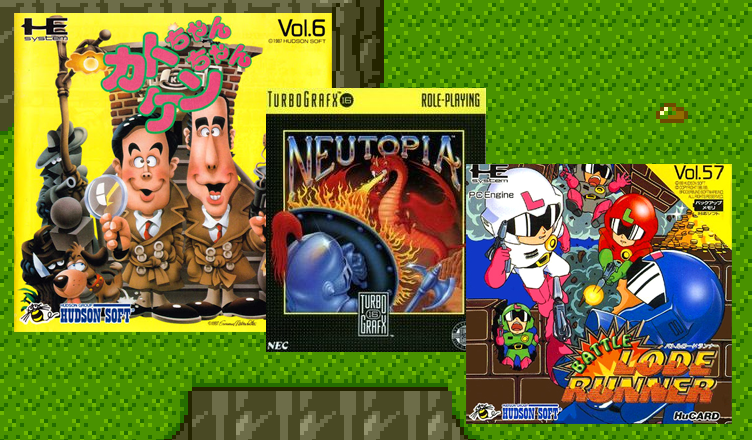
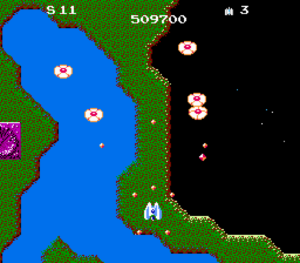
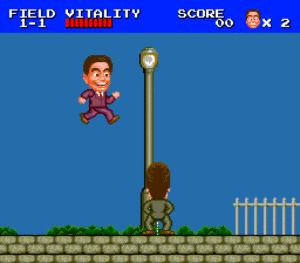

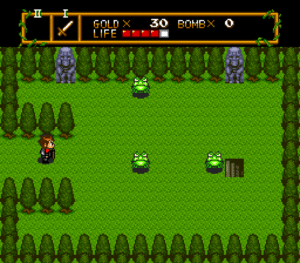
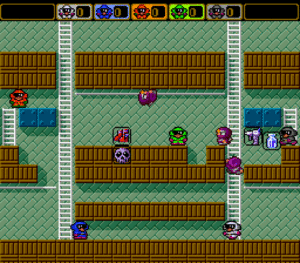





One thought on “Interview with Keigo Yasuda (Hudson Soft)”